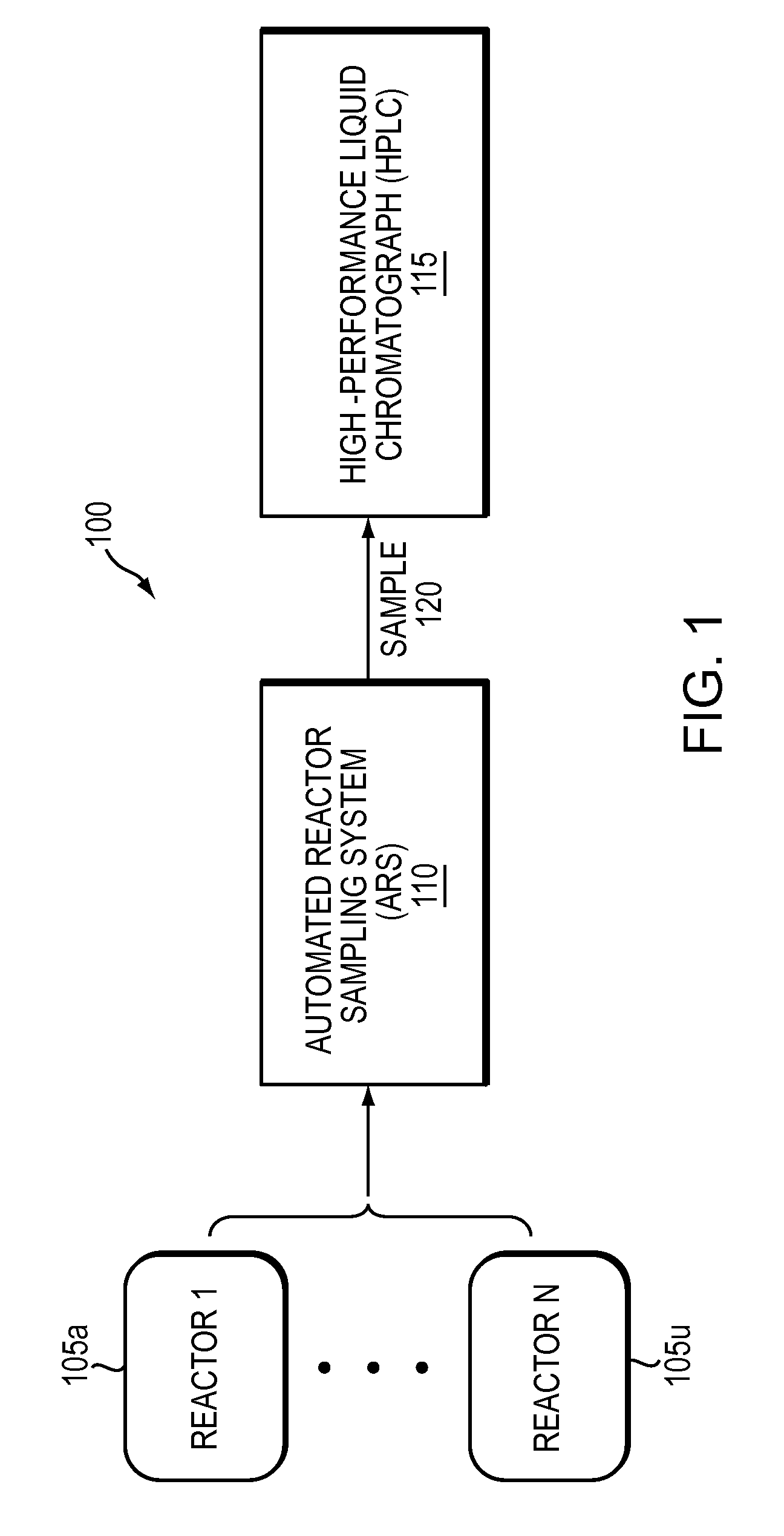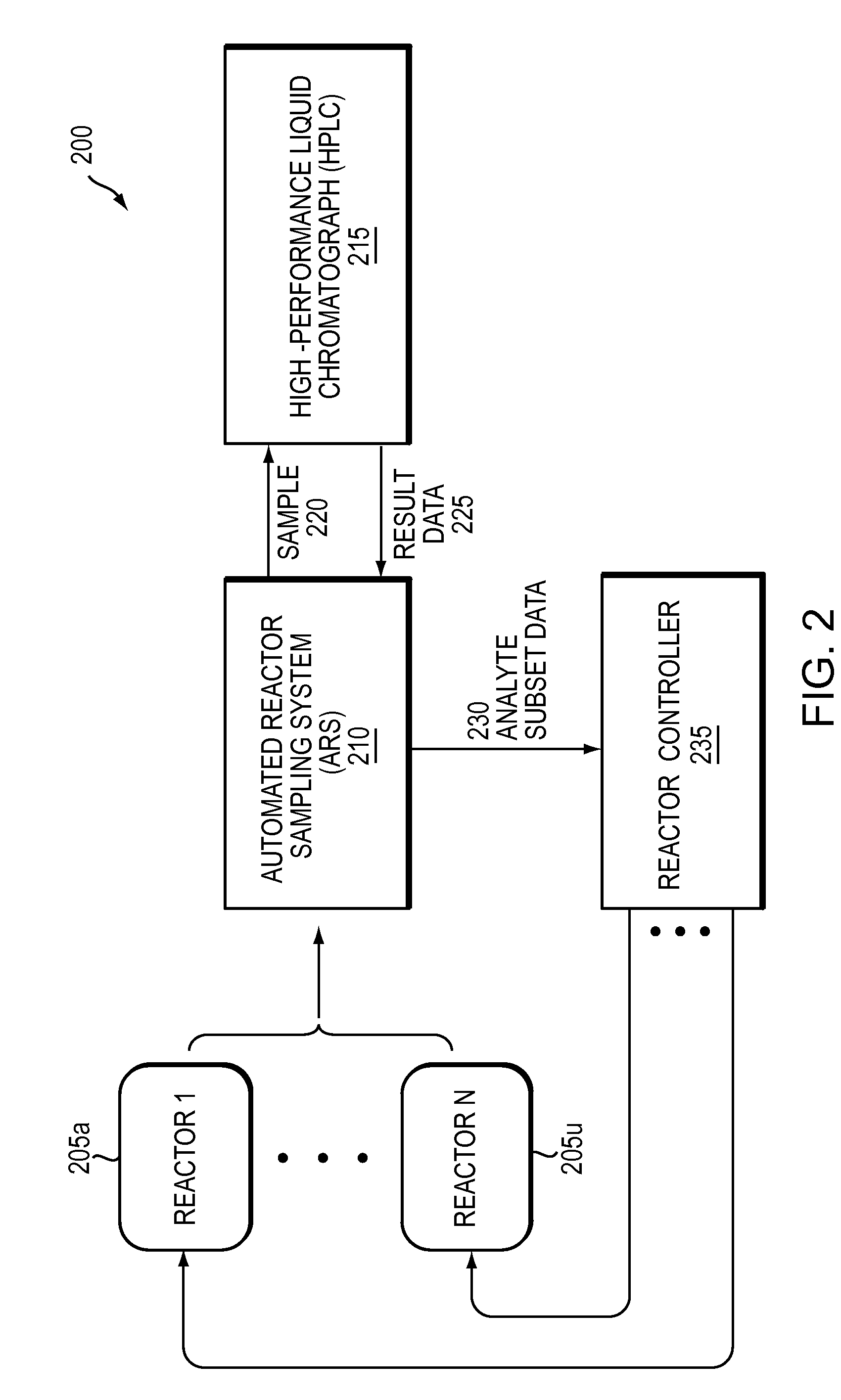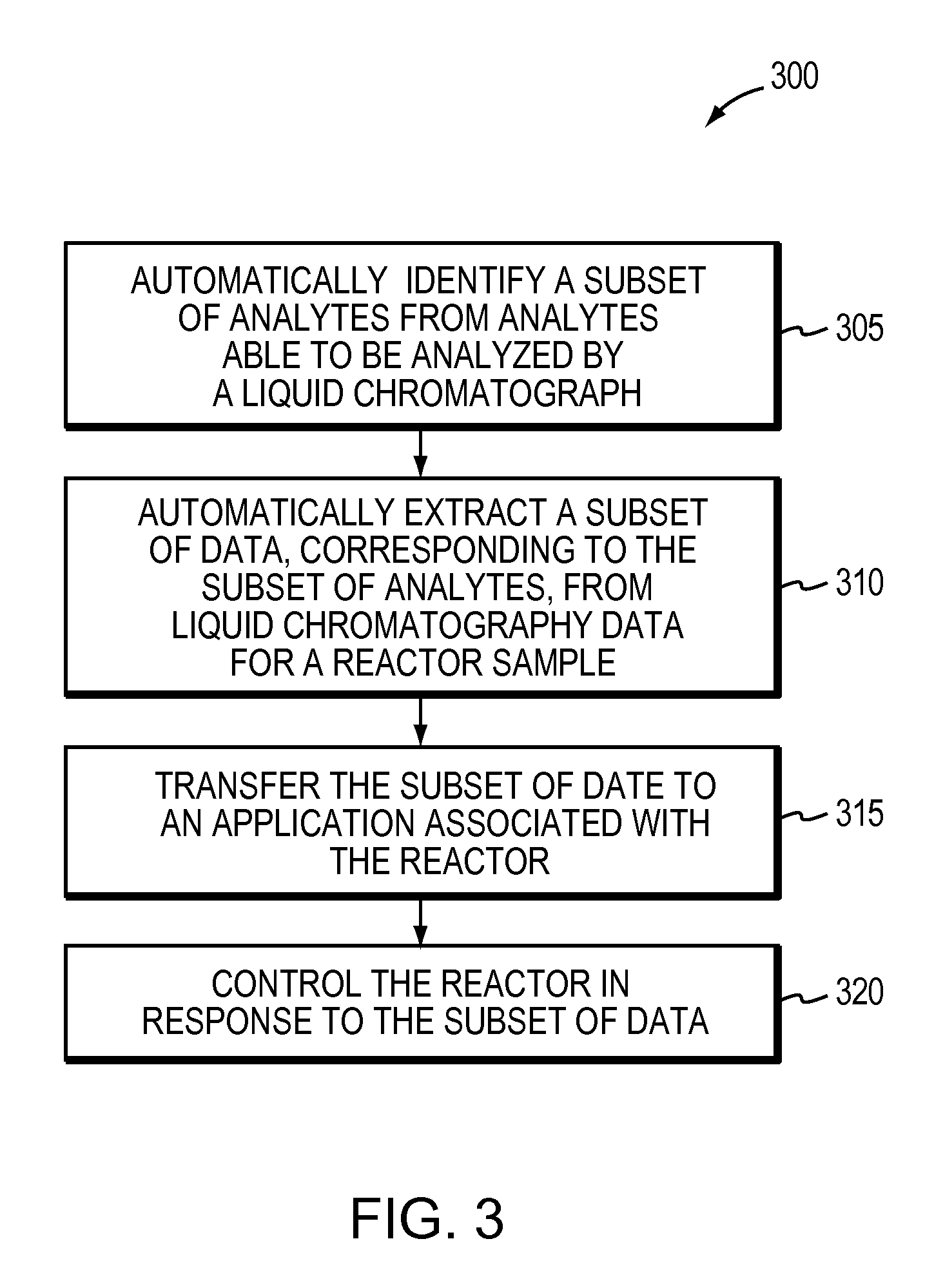Methods and systems for identification, extraction, and transfer of analytical data for process control
a technology of process control and analytical data, applied in chemical methods analysis, instruments, material analysis, etc., can solve the problems of manual process, inability to automatically send specific identified analytes and analyte concentration values to historian databases or applications, manual process is susceptible to human error, etc., to reduce the risk of analyte misidentification and minimize the time of data transfer
- Summary
- Abstract
- Description
- Claims
- Application Information
AI Technical Summary
Benefits of technology
Problems solved by technology
Method used
Image
Examples
Embodiment Construction
[0026]A description of example embodiments of the invention follows.
[0027]FIG. 1 is a block diagram illustrating a system 100 for performing High-Performance Liquid Chromatography of a liquid sample 120 from a reactor 105 using an Automated Reactor Sampling (ARS) system 110. The ARS 110 obtains a sample 120 from one of the reactors 105a-n and transfers the sample 120, in this embodiment, to a High-Performance Liquid Chromatograph (HPLC) 115. The system includes a pump that moves the sample through a column and a detector that determines retention times of various analytes in the sample as they move through the column. HPLC is a form of column chromatography used to separate, identify, and quantify compounds (analytes). An HPLC device uses a column that separates mixtures into a flow stream of separate analytes based on physicochemical parameters. Analytes' retention times vary depending on the interactions between the analytes in the sample and the materials in the column. To obtain...
PUM
| Property | Measurement | Unit |
|---|---|---|
| liquid chromatograph | aaaaa | aaaaa |
| retention time | aaaaa | aaaaa |
| concentration | aaaaa | aaaaa |
Abstract
Description
Claims
Application Information
 Login to View More
Login to View More - R&D
- Intellectual Property
- Life Sciences
- Materials
- Tech Scout
- Unparalleled Data Quality
- Higher Quality Content
- 60% Fewer Hallucinations
Browse by: Latest US Patents, China's latest patents, Technical Efficacy Thesaurus, Application Domain, Technology Topic, Popular Technical Reports.
© 2025 PatSnap. All rights reserved.Legal|Privacy policy|Modern Slavery Act Transparency Statement|Sitemap|About US| Contact US: help@patsnap.com



